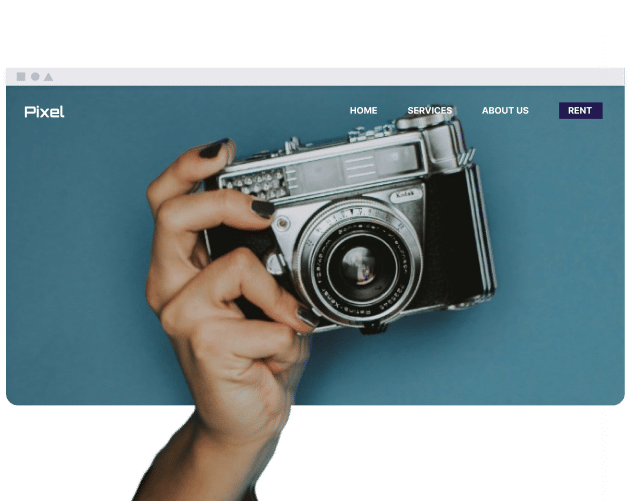How does color influence user behavior and navigation decisions, including research data?
Color can be linked to specific internal perceptions and feelings, impacting the message delivery. Each tone conveys distinct traits related to mood, perception, and even decision-making.
Examples:
- Red is a strong color that evokes strong passion and compels prompt action, therefore it is ideal for buttons that require clicking.
- Blue evokes cognition and loyalty and is, therefore, appropriate for brand logos and navigation menus.
- Green is often associated with relaxation and is commonly used on websites related to health and wellness.
- E-commerce websites often employ the color yellow in an attempt to convey energy and optimism to their customers.
How does color psychology influence good navigation design?
The influence of color in navigation design is significant in guiding user interaction with content while influencing the overall user experience.
Color plays a significant role in visual communication by drawing attention to specific features, reinforcing brand association, and arranging information.
Optimizing the website’s navigation may involve implementing strategic color choices and subtle design cues to promote desired user behavior.
How does color contrast impact navigation accessibility?
Color contrast is an important factor for navigation accessibility, as it determines how readable and visible various elements are for all users, especially those with visual impairments. WCAG (Web Content Accessibility Guidelines) defines some specific color contrast ratio recommendations which should be a minimum of 4.5:1 for normal text and 3:1 for large text.
Such guidelines may facilitate user interaction with the content. In addition, good color contrast is vital to a user’s experience, especially under bright ambient light, where contrast is generally low.
What are the pros and cons of different website navigation color combinations?
Specific color schemes could potentially affect how visitors interact with website menus. Here are examples to consider:
- Choosing a dark and light color (i.e. black and white) is readable but is also dull.
- Bright colors or complementary colors (i.e. blue and orange) attract a lot of attention but can be difficult on the eyes.
- Colors adjacent to one another on the color wheel (i.e. shades of blue and green) are pleasing but they may be too discreet.
- Colors of the same hue but with different tints (i.e. monochromatic colors) are appealing and sophisticated however the level of contrast can prove to be difficult.
It all depends on your brand and targeted group of people, but readability should be the main focus. In the end, the best combination of colors is the one that has an enticing aesthetic but is also easily readable to all visitors.
What are the best practices for using color to create clear and intuitive navigation?
Give preference to the following aspects when crafting your website:
- Ensure enough contrast between the navigation elements and their background allowing easy reading.
- Apply the same colors to your site to reduce the likelihood of confusion.
- Employ colors strategically to establish a rank order in the primary navigation and the subordinate navigation.
- Draw attention to critical actions with the help of colors to facilitate user activities.
- Do not use color alone to provide information, for example, use icons or underlining so all users can receive the information.
Conclusion
Color is a significant factor in the design of a website as it influences user behavior, the ability to find information, and the website’s ease of use. Proper use of color strategy includes taking into account the guidelines for accessibility, culture, and user behavior and subsequently designing a clear intuitive navigation system. By considering these factors, it is possible to raise the level of functionality and the experience that is provided by the website. Color has the potential to influence how organizations engage their target audiences through website design. Consciously implement colors and observe the impact on your website’s performance.

